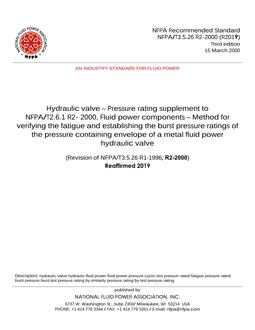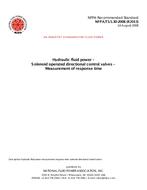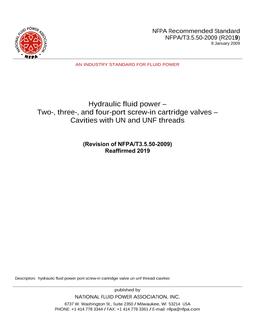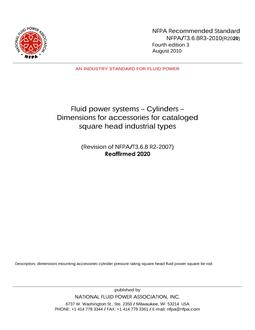
NFPA (Fluid) T3.5.26 R2-2000 (R2019)
Click here to purchase
1.1 This standard provides:
- test and statistical methods for generating fatigue distribution data;
- test and statistical methods for conducting a verification of the pressure ratings on fluid power hydraulic valves;
- common requirements and an industry-wide philosophy in judging one type of pressure capability for hydraulic valves typically used in fluid power applications;
- uniform methods of product comparison;
- hydraulic valves may contain one or more pressure zones. Each pressure zone may have pressure ratings based on a maximum differential pressure to an adjacent lower pressure zone or atmosphere;
- attachments (see 3.3) can be rated as integral parts of hydraulic valves or as an independent components.
1.2 This standard limits conditions as follows:
- constant amplitude, pressure induced loading of the elements that constitute or maintain the pressure containing envelope;
- product life of at least 100,000 cycles;
- pressure levels and pulse durations as defined in NFPA/T2.6.1 R2-2000;
- temperatures from the charpy impact transition temperature to the threshold of creep sensitivity;
- environments which are chemically compatible with the materials of the pressure containing envelope;
- materials that are aluminum, magnesium, steel, iron, copper based alloys, cobalt, titanium, stainless steels, nickel steels and monel. Specifically excluded are more creep sensitive materials such as: zinc, plastic, rubber and sealing devices.
1.3 This standard encourages manufacturers to use this common method to enhance the credibility of their pressure ratings.
Product Details
- Edition:
- 3rd
- Published:
- 03/15/2000
- Number of Pages:
- 9
- File Size:
- 1 file , 380 KB


